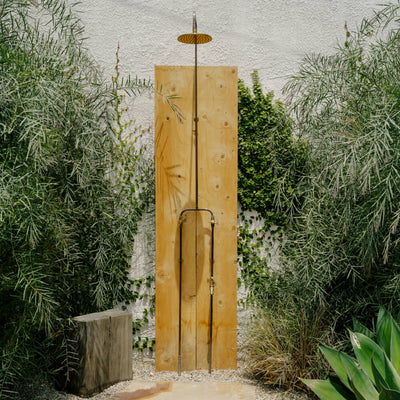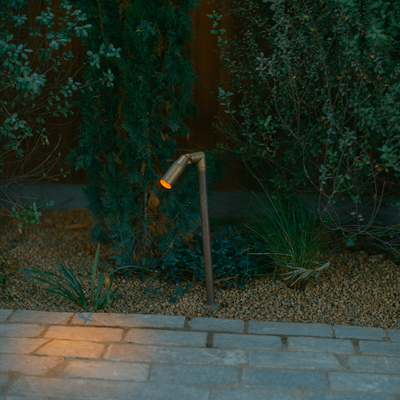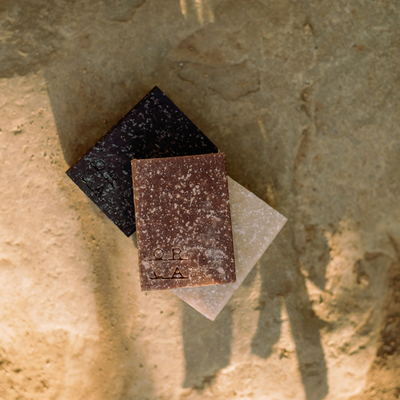PLANTS +
PEOPLE
A study of the symbiotic relationship between
humans and the gardens they tend to.
Edward Abbey wrote that what draws us to the desert “is the search for something intimate in the remote.” At home in the desolate Mojave, Sara and Rich Combs have cultivated an environment personified by immersive connection — a reflective and restorative retreat amid the extremity of the desert.

sarah and rich combs
002 sarah and rich combs
region: Joshua tree
plant community: creosote bush scrub, Joshua tree woodland
landscape design: sara and rich combs
photography: justin chung

In 2015, the couple purchased a home in Joshua Tree, envisioning it as a creative escape and place of solace away from the city. Renovating the house and filling it with detail, artful design, and personal touches from the landscape and their travels, it became a popular secret among friends (and soon strangers), with requests to rent out “the Joshua Tree House.” Quickly, Sara and Rich realized they might be onto a bigger idea — today, the duo owns and manages two distinct and popular rentals in both Joshua Tree and Arizona’s Sonoran Desert, while continuing to live full-time in the Mojave. Here, they’ve worked to create an environment that respects the landscape…listening and honoring the life that thrives amid extremity and finding beauty in the specific cues that personify its subtle shift in season.
We spent a late spring day with the expecting couple for a walk through their cacti-filled garden, and a conversation on the slow rewards of desert living; the wild botanicals that have become utilitarian staples; and the desert drink du jour — a prickly pear margarita.


“Creosote is one of our favorite native plants here in the Mojave, and you’ll often find us bringing clippings inside either to add to a vase or to hang from our shower head. When the water hits it, the smell is intoxicating.”
Sara Combs
What is your first or earliest memory of being in a garden?
Some of my earliest plant memories are in my childhood backyard surrounded by wild ferns and oak trees. I had a favorite rock I would lay on and look up through the leaves of the oak to outlines of the sky. This was in Connecticut, which is such a contrast to the desert plants we have in our garden today.
Describe how your garden: feels, smells, sounds, tastes. Feels like sunshine. Smells like petrichor. Sounds like ocean waves when breezes pass through the plants. Tastes like prickly pear tunas (cactus fruit) in the summer.
What plants are currently in your garden? Our garden mostly focuses on cacti: A variety of prickly pears, barrel cacti, cholla, fence posts and the stars of the show (in my opinion) are the fat boy cacti, or helianthocereus terscheckii, which tower over the rest and flank either side of our garden. We also have Joshua trees, yuccas, agaves, brittlebush, mesquite trees, palo verdes, creosote, rosemary, bottlebrush, and acacias.
Describe your garden now and where you envision it in five years.I love watching our garden transition through the seasons; particularly when the cacti bloom in the spring and fruit in the summer. It’s been so fun watching everything we’ve planted grow over the years, and over the next five years we hope to watch cuttings mature and already established plants continue to grow. We just planted a palm tree so it'll be fun to see how that will look!
Do you use plants medicinally? What is your plant routine? Creosote is one of our favorite native plants here in the Mojave, and you’ll often find us bringing clippings inside either to add to a vase or to hang from our shower head. When the water hits it, the smell is intoxicating. Another plant we’re often clipping from our garden is rosemary. It makes great bundles for smudging and is a favorite herb that does well in our climate.

What plants do you use for cooking or healing?
We’re always cooking with our rosemary, and for healing both the aloes and creosote are great for irritated skin. Aloe is what we immediately go to if we ever get a sunburn, and creosote is antimicrobial, anti-fungal, and rich in vitamin E, making it great for healing wounds or inflammation. In the summer, we make as much as we can with the tunas from our prickly pear cacti—prickly pear juice with a little lime and sparkling water is a favorite. It also makes a great margarita.
What’s in your garden shed?
Planting cacti can be a tricky situation—our favorite tools for that are of course a shovel, some brown paper (to wrap around the cactus to prevent getting spines on us), and extra rope or old carpet scraps for carrying and maneuvering it. A rake and a hula hoe for weeding the sand are go-to tools as well.
Do you have any garden traditions that you’ve inherited or learned and plan to pass on?
We learned from our neighbors to fertilize around Valentine’s Day, Memorial Day, and Labor Day for a healthy garden and that planting cacti with a small stock tank underground can help conserve water and keep groupings of plants hydrated.
What has a consistent application of care for your garden taught you about the role of seasons or cycles in everyday life?
The work we put in now will be rewarded in the next six to twelve months. Every physically exhausting moment hauling rocks and cacti in the garden, renovating a new space in our work life, or nurturing a relationship in our personal life is a perfect time to remember the beautiful reward that we’re creating for our future selves.
acacia craspedocarpa
(leatherleaf acacia)
Slow growing large shrub or small tree. Reaches a mature size of 10' x 10'. Rounded gray green, leathery leaves. Bright yellow flowers can appear spring through summer. Good for small spaces or in large containers.

yucca rostrata
(Beaked Yucca)
A slow-growing, evergreen tree-like yucca with a rounded rosette and blue-green leaves. Often seen with a single trunk, it can grow as tall as 12 to 15 feet tall. Drought tolerant and great in a xeriscape garden.

Echinocactus grusonii
(Golden Barrel Cactus)
Globe-shaped and ribbed with golden spines, this cactus has bright, yellow flowers. It grows up to two feet tall and wide, and is lovely in a rock garden or as a container plant.

“Every physically exhausting moment hauling rocks and cacti in the garden, renovating a new space in our work life, or nurturing a relationship in our personal life is a perfect time to remember the beautiful reward that we’re creating for our future selves.”
SARA COMBS

Encelia farinosa
(Brittlebush, Inciensio, Desert Sunflower)
Native to California, this mounded shrub has grayish-white, fragrant foliage and bright, yellow daisy-like flowers. It is very heat tolerant and can grow up to five feet tall and wide.

Dasylirion wheeleri
(Desert Spoon, Common Sotol)
An evergreen, succulent shrub with long, serrated blue-gray leaves. It has a short trunk and flowers every few years when a tall stalk emerges with tiny white flowers. It is very heat tolerant and great in a sunny, dry garden.




Senna artemisioides
(Feathery Cassia or Silver Senna)
Native to Australia, this evergreen shrub is drought tolerant and low maintenance. It has soft, light gray-green leaves and fragrant yellow flowers. Rounded in form, it can grow up to six feet tall and wide. Plant in a sunny spot with well-draining soil.

Aloe maculata
(Soap Aloe)
A tough, succulent perennial with brightly colored rosettes that can grow up to 18 inches tall. It is great for a drought tolerant garden and attracts hummingbirds.

Salix exigua
(Coyote Willow, Desert Willow)
Fast-growing, this deciduous shrubby tree is native to most of North America. It has long, narrow gray-green leaves and can grow beyond 15 feet. Prefers well-draining soils and does best in full sun.

Cylindropuntia leptocaulis
(Desert Christmas Cactus, Desert Cholla, Pencil Cactus)
This upright, shrubby cactus is made up of many slender, spiny branches. Yellow-green flowers are followed by a rounded, edible red fruit. It can grow up to five feet tall. Drought tolerant and great in a xeriscape garden.

Opuntia microdasys
(Angel’s-Wings, Bunny Ears, Polka Dot Cactus)
Low-growing and shrubby, this cactus grows up to three feet tall and six feet wide. Its flattened, oval shaped green pads grow in pairs, resembling bunny ears, and are spotted with prickly white hairs. It is low maintenance, great in a dry garden or as a container plant.

Cleistocactus strausii (Silver Torch)
(Silver Torch)
This slender, columnar cacti is covered in wooly white spines and produces narrow, tubular magenta-colored flowers along its silvery blue stem. It is native to Bolivia and can grow up to ten feet tall. Excellent in a dry garden, rock garden, against the backdrop of a wall, or as a container plant.


At orca, our work begins by understanding that it doesn’t end — a landscape is an ongoing dialogue, shaped by seasons and in response to our environments. Plants + People is an ongoing exploration of what it looks like to plant roots, to honor cycles, to inhabit space, and to accept impermanence through the perspectives of individuals we admire.






